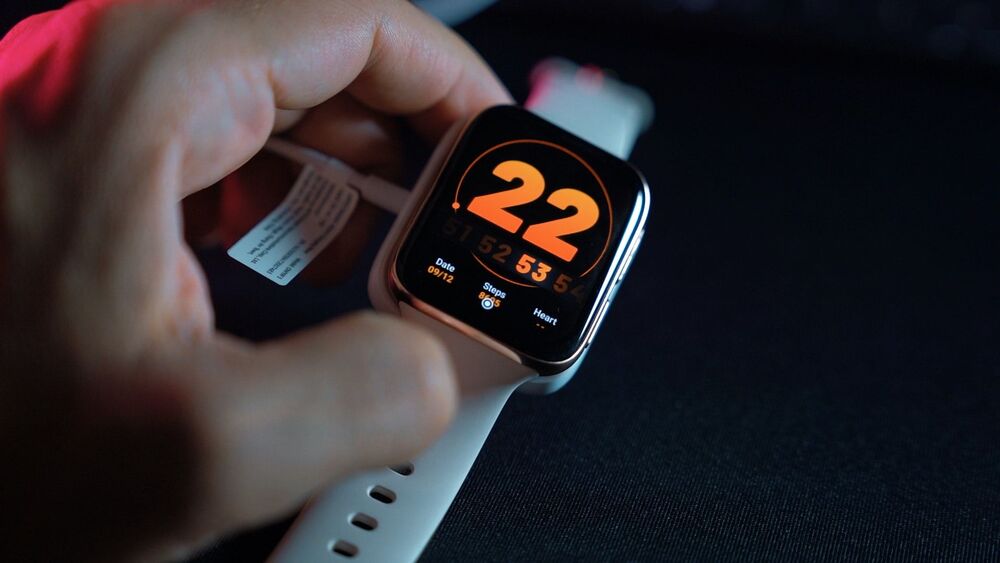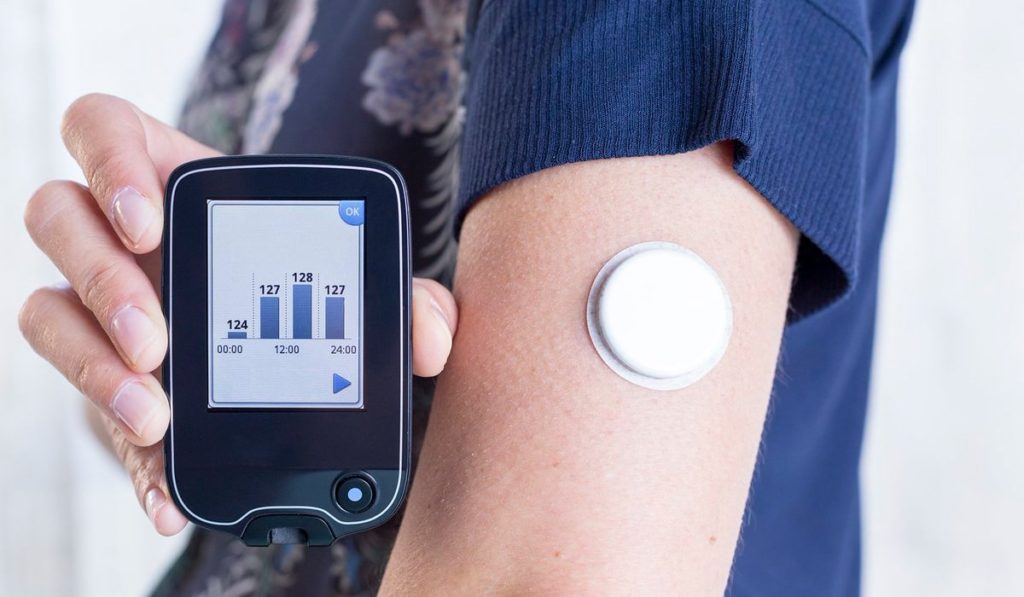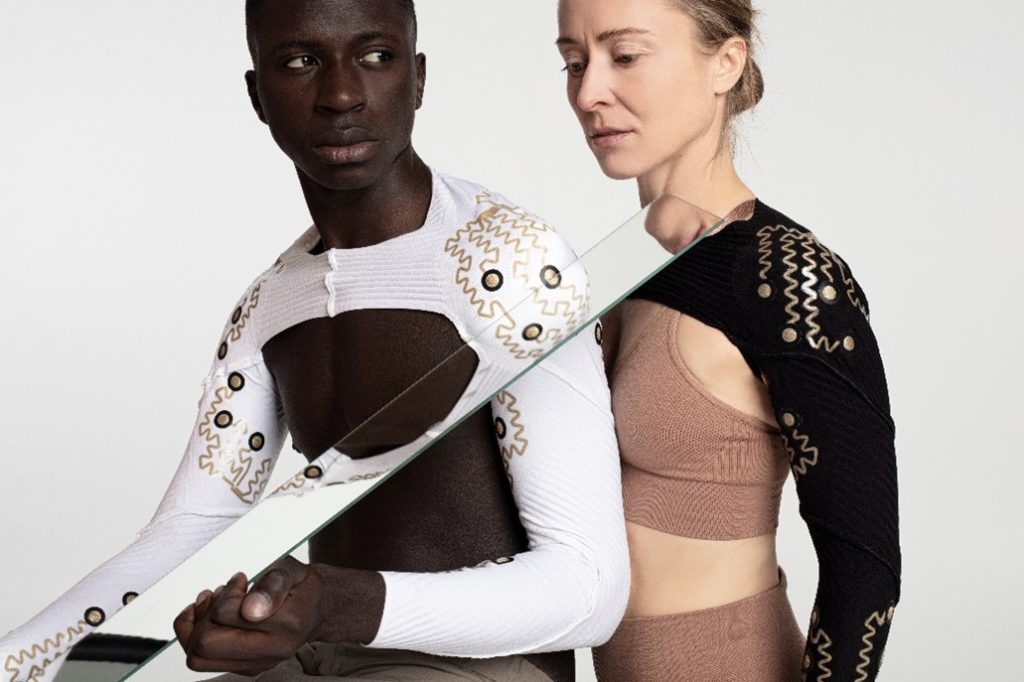Wearable App Development: Trends, Technologies, and Use Cases
The wearable technology market is on the rise right now, and its growth isn’t going to stop anytime soon. In the future it will be hard to imagine a workout without data from a wearable device. Fitness, however, isn’t the only use case for wearable technology
Wristbands and smartwatches are the first things that usually come to mind when you hear the word wearable. This isn’t a surprise, as this whole industry as we know it today boomed with a release of Fitbit back in 2010.
Today, wearable technology is used across multiple industries, from fitness and healthcare to entertainment and construction. The future of wearable technology is bright and promising.
In this article you’ll learn about the benefits of wearable technology for businesses, top platforms, recommendations on creating your own app, and the challenges that may occur on the wearable app development journey.
What are wearables: types and use cases
Wearables are miniature devices that people can wear on themselves and get valuable data from the mini-sensors built into the devices. Usually these devices are paired with a mobile interface that gives users a convenient way to view the data, tune the wearable device according to their needs and manage the sensors.
Wearable devices come in all shapes and forms, and basically anything you can wear probably has a wearable alternative in the world of technology. Let’s review the most popular types of wearable technology and look at the wearable device examples.
Wristwear

Wristwear is the most numerous category of wearable devices popular among consumers. These devices include wristbands and smartwatches that have these sensors:
- Fitness trackers
- Activity monitors
- Pedometers
- Sleep sensors
These devices are extremely popular in the fitness and wellness industry, as they help to track activity throughout the day, have various workout programs, track heartbeat, sleep quality, walking distance and other parameters. There are lots of wearable app development companies that specify in building wristwear.
Eyewear
Eyewear devices have been steadily gaining popularity in recent years and are among the hottest wearable technology trends. Companies like Meta, Microsoft and Google are all working on their own eyewear gear. The eyewear devices include:
- Smart glasses
- Light emit glasses
- VR headsets
- AR headsets
Gaming and entertainment aren’t the only industries that use eyewear technology. AR headsets for remote assistance are very promising in the professional area, for example on construction sites, warehouses or factories. Industrial AR headsets are sturdy and can be used for assisting human workers and improving the internal operations.
Healthcare wearables

Personal health wearables come in different shapes, from wristbands that are similar to fitness trackers to smart skin patches. Healthcare devices can monitor:
- Blood pressure
- Sugar level
- Sleep and activity
- ECG
- Posture
- Fall detection
- Body temperature
These devices can also remind patients of taking medicine and being active for faster recovery and better health habits.
Smart clothes

Smart clothes allow people to monitor their health and performance, and are especially popular among professional athletes. Smart clothing includes:
- Smart shoes
- Smart work clothes
- Smart sleepwear
- Smart activewear
- Smart casual wear
- Smart socks
According to Markets and Markets, the industry of smart clothing is expected to grow from $1.6 billion to 5.3 billion between 2019 and 2024.
Smart clothes are used in fitness, sports, defense, firefighting, and other areas.
Smart rings

The wearable technology can also be put into a small ring that looks like a fashionable accessory, but actually can track health, unlock cars and allow users to see notifications without looking at their phone. Smart rings are often used by active business professionals who don’t want to wear wristbands or smartwatches.
There are also other types of wearable devices, for example, smart earpieces that allow users to listen to music while also tracking their health, and implants that are the smallest devices people can implant into their bodies and get valuable information about their health.
Industries and use cases
Let’s review the industries that benefit most from wearable technology and look at the ways they use them for their business.
- Fitness — uses wristwear and other devices for tracking activity and physical parameters, suggesting workout programs, gamifying the workout experience, and measuring distance
- Healthcare — uses wearable technology to measure physical parameters like blood pressure, heart rate and others, and also detects falling and can automatically call emergency
- Insurance — tracks behavior and activity to reward users with lower rates and estimate risks of diseases or accidents
- Entertainment — allows users to listen to music and podcasts while working out, running or commuting
- Professional sports — uses smart clothes and other gear to accurately measure physical activity and parameters of professional athletes
- Fintech — allows contactless payments with smart wristbands and smartwatches
- Education — uses AR and VR glasses to gamify and improve the learning process of studying biology, medicine, physics, and other disciplines
- Messaging — allows users to see and answer texts without a smartphone by just using their smartwatch
- Industrial work — improves safety on the site and provides instructions through smart glasses and other wearable gear
It’s clear how these devices are beneficial to the users. But how businesses can benefit from building wearable applications for their customers?
Benefits of wearable app development for business
The benefits of wearable technology for business depend on your goals and target audience. A business can either create an application for their end users, or for their employees.
If you invest in wearable app development solutions for your customers and end-users, you’ll get:
- Increased engagement — wearable apps can be gamified and the engagement with your business will increase which may lead to growth in revenue and brand awareness
- More data about your users — wearable apps gather lots of data about their users through sensors. Insurance companies use this data to determine the best plans for particular groups of users and reward safe behavior or physical activity
- Effective notifications — mobile notifications are one of the most effective ways to communicate with users. Wearable applications deliver notifications even if the phone isn’t around, and this means a higher open rate and visibility for your brand.
If you create a wearable application for your employees, you get:
- Increased productivity — devices allow employees to communicate more efficiently and automate some parts of their work.
- Increased workspace safety — wearable devices can detect potential hazards and remind employees of safety measures.
- Employee satisfaction — employees can feel how technology helps them to work more efficiently.
- Effective internal operations and communication — detect the bottlenecks in your employees’ work and improve the current work algorithms. Also, allow your employees to communicate without having to check their phone.
There are lots of pros and cons of wearable technology, so it’s important to find professionals who will be able to guide you through the world of wearables app development.
How to create a wearable app: a step-by-step guide
Creating a wearable application is a challenge because of certain limitations, so it’s important to plan development from a technical standpoint. However, the business aspect is even more important, as it’s the backbone of all features and business logic of your future app. Let’s look at the whole process of creating a wearable app, from planning to release.
Step 1. Define your use case
Before looking for someone who provides wearable app development services, it’s important to understand what exactly you want. A use case is a simple idea of how your application will be used and how it will benefit both you and your users. There are lots of use cases for all kinds of devices, and I’d recommend starting with a concise idea that covers one or a couple of use cases.
To successfully define your app’s use case, you need to know your users well. For this, you can conduct a series of researches that includes:
- User personas study
- Market research
- Competitor research
- Target audience analysis
- Product-market fit analysis
After this research work, you should be able to come up with a business plan around your simple idea of a use case.
Step 2. Find a reliable vendor
If you don’t have an in-house team of developers with experience in building wearable apps, you need to find a vendor. This can be an outsourcing development company or a team of freelance developers.
There are several ways you can use to find a perfect wearable app development company for your budget and needs:
- Ask your acquaintances or partners for recommendations
- Search through online listings like Clutch.co or Goodfirms to find reviews
- Visit websites of your potential vendors and look at their portfolio
- Search for expert content and contact potential vendors
To accelerate your search for the best wearable app development company, you can also create a RFP (request for proposal), where you’ll explain your idea and ask questions about the process and preliminary estimate for your project.
I recommend scheduling calls with your shortlisted experts and ask for a consultation. A good vendor will offer you several potential solutions from the get-go and provide you with a preliminary estimate.
Step 3. Choose a platform for your app
The world of wearable devices and software is extremely diverse, and it’s easy to get lost in different types of wearable technology. With mobile apps you just need to choose between Android and iOS, or pick both, but wearable applications can exist on multiple different platforms, each with its own peculiarities. Platforms are usually device-specific. This means that you’ll need to develop a separate application for all device manufacturers that you want to cover.
Let’s look at the most popular platforms in different categories of wearable devices.
Smartwatch platforms:
- Apple WearOS
- Android Wear
- Samsung Gear S Series
- HarmonyOS
- MIUI (for Watch)
Fitness tracker platforms:
- Fitbit
- Garmin
- Samsung Gear Fit
- Mi Band OS
- HarmonyOS
Smart glasses:
- Glass OS
- HarmonyOS
- Daqri
- Epson Moverio
- Sony SmartEyeGlass
- Vuzix
These are only three types of wearable devices, and there are even more platforms for smart rings, smart clothing and other devices. To choose the right platform for your business goals and target audience, it’s best to get the opinion of professional developers from a wearable app development agency.
Step 4. Develop UI and UX for your wearable app
User interface and user experience of wearable apps is very different from mobile UI/UX design. That’s why it’s particularly important to hire a designer who has experience in building UI/UX for wearable devices.
Wearable devices are significantly smaller than mobile devices, they also have fewer controls and place for UI elements. At the same time, you can’t make the UI elements too small, otherwise it will be hard for users to navigate your app with their fingers.
Here are some principles of UI/UX design for wearable devices:
Make your screen glanceable — you need to make sure that all the key elements of your interface are visible on a first glance. For example if you develop a wearable fitness app, your user should see their steps, heart rate and distance when they look at the screen without having to press any buttons.
Simplify the user experience — your app should be very simple and concise, and the interaction shouldn’t take more than ten seconds. If it takes too long to find a certain function or type inputs, you need to make the user journey shorter. Voice commands can go a long way when it comes to simplification.
Make your interface clear — simple fonts, minimalist shapes, clear colors and high contrast are small details that make a big difference.
Step 5. Keep battery consumption in mind
Batteries of wearable devices aren’t as powerful as the batteries of mobile devices, so developers need to make extra effort to reduce battery consumption by their apps. They should remember about memory consumption as well, otherwise it will take forever to load.
To fight these challenges of wearable devices, developers should reduce the number of processes and leave only what’s important, and also optimize code so it’s lightweight and easy to load.
Step 6. Take care of security early
Just like any other IoT devices, wearable devices are prone to security breaches, so it’s important to develop your security strategy before you start the development process. This is especially important with healthcare wearable app development that needs to be compliant with regulations like HIPAA.
Here are some other things you need to take care of when making your wearable app secure:
- Data storage and encryption — often, data is stored on wearable devices without encryption, so you need to take care of this yourself.
- Camera access — cameras are easily hacked, so if your app has access to it, make sure to secure it.
- Wireless connectivity — hackers can get to user data through WiFi, especially the public networks. Secure WiFi and Bluetooth connections to prevent hackers from accessing your user data.
Step 7: Choose the type of your wearable app
There are several approaches to wearable app development. The difference between these types lies in their independence from a mobile device, operation logic and functionality.
- Standalone app — runs on a wearable device and connects to the internet via WiFi. Such apps are completely independent from mobile devices.
- Companion app — is developed along with mobile applications. Their functionality is limited, and they constantly exchange data with a mobile application. A user can manage a wearable device through their mobile phone.
- Faces — is just a custom lock screen for a smartwatch.
- Glances — show the updates from mobile apps.
- Notifications — show push notifications from smartphones on wearable devices’ screens.
Usually businesses build either standalone or companion wearable applications. They can also be divided into three different groups based on how they’re installed:
- Installed from a wearable app store
- Installed from a smartphone
- Doesn’t need installation as the smartphone app sends information to the wearable directly
Step 8. Make a list of features
Determine the functionality of your future application and prioritize the features to know what to develop first. A typical wearable application has the following features:
- Push notifications
- Navigation and controls
- Voice commands
- UI UX elements
- Data from sensors
- Settings
Also, if you want to create a companion app, you’ll also need to develop a smartphone application as well if you don’t have one already. For standalone wearable apps you may need to develop a container app that carries the setup process. However, most smartwatches are able to connect to the internet and install an app directly from the app store.
Step 9. Choose your tech stack
Along with the operating systems for your target devices, you also need to choose other technologies for your app such as SDKs, APIs, libraries and programming languages.
Here you can see what programming languages and IDEs are available for each wearable platform.
| Platform | Language | IDE |
| Android Wear | Java or Kotlin | Android Studio |
| watchOS | Swift or Objective-C | Xcode |
| Google Glass | Java or cloud-based | Android Studio |
| Samsung Gear (Tizen) | C, C++, JavaScript | Tizen SDK |
Step 10. Develop, launch and maintain your app
After all technologies, features and platforms are decided on, the hardest part is behind. Now it’s time to develop and test your application, and then release it to the app store or in other ways I mentioned earlier.
The work, however, doesn’t stop with launch. Now you need to regularly maintain your application, as it’s important for security, usability and relevance of your application. You’ll need to do regular security and performance checks, adapt your app for the new versions of the operating systems and update all third-party solutions like libraries.
How Mobindustry can help you develop a wearable application
For over 10 years of experience in building mobile and web applications, we have also developed several wearable applications for our partners in healthcare, fitness, logistics and insurance industries.
We can help you on each stage of wearable app development, from IT consulting and discovery stage of your project, to development and maintenance of your app.
We can help you on each stage of wearable app development, from IT consulting and discovery stage of your project, to development and maintenance of your app. Our IoT specialists can help you choose the right tech stack for your needs and business goals, and also recommend and implement all the necessary security measures.
A wearable application can become a great addition to your mobile application or a standalone tool that will improve your service or internal operations at your company. If you want to develop a wearable app or get a preliminary estimate for your project, don’t hesitate to contact us.
Frequently Asked Questions
The platform depends on what wearable device you want to develop an app for. Here are the most popular platforms for different categories of wearable devices:
Smartwatch platforms
- Apple WearOS
- Android Wear
- Samsung Gear S Series
- HarmonyOS
- MIUI (for Watch)
Fitness tracker platforms
- Fitbit
- Garmin
- Samsung Gear Fit
- Mi Band OS
- HarmonyOS
Smart glasses
- Glass OS
- HarmonyOS
- Daqri
- Epson Moverio
- Sony SmartEyeGlass
- Vuzix


